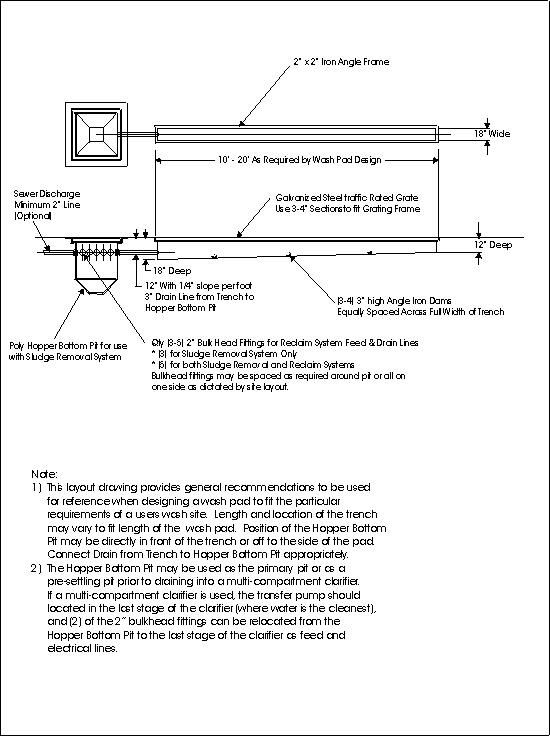Trench Drains and Hopper Bottom Pits are part of a good wash pad design and are an essential component of an effective wash and water recovery system. Common sense recommendations with most stationary wash pad designs include:
- An adequately sized Wash Pad — Good design allows for a minimum of 10′ clearance all around the largest vehicle to be washed on the wash pad.
- An Equipment Pad should also be adequately sized to allow for the proper layout of all wash and water recovery equipment and should be elevated off the wash pad 4-6″ to keep equipment out of standing water.
- To facilitate dirt, silt and debris “drop-out” a Trench Drain is highly recommended. Most applications require the Trench Drain to be no more that 6-12″ deep and 12-18″ wide. Angle Iron Dams positioned 5-6′ apart and located on the floor of the trench drain are recommended to facilitate dirt and silt drop out in the trench.
- A Hopper Bottom Pit is also recommended in the water drainage system. The Hopper Bottom Pit is used as part of a Sludge Removal System to eliminate sludge from the pit without costly pumping out.
- Depending on dirt, oil and grease content in the water, more than one Hopper Bottom Pit or a multi-compartment clarifier may be required.

